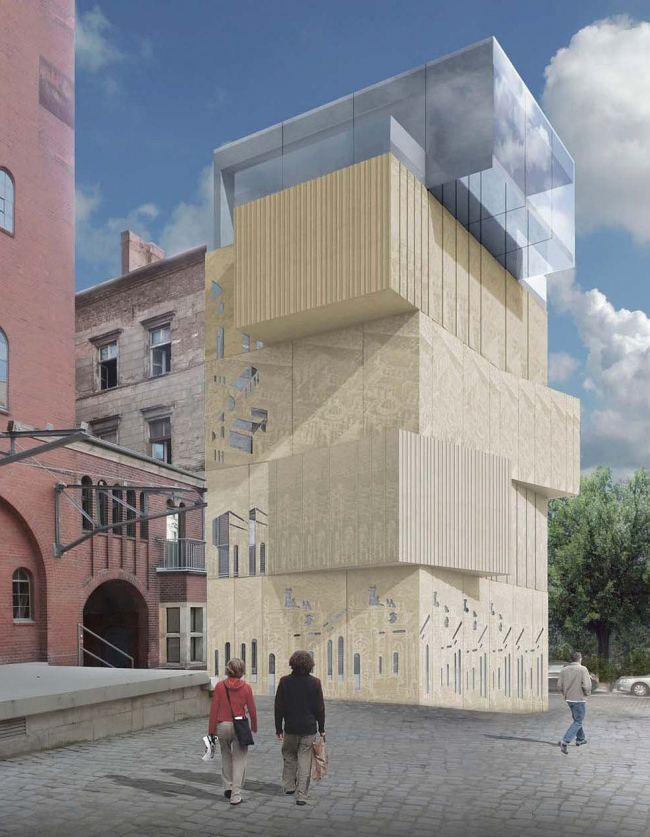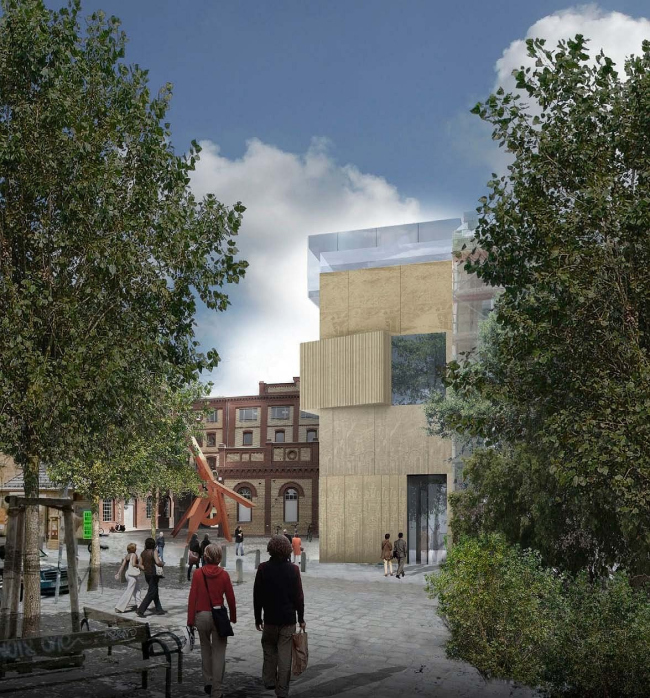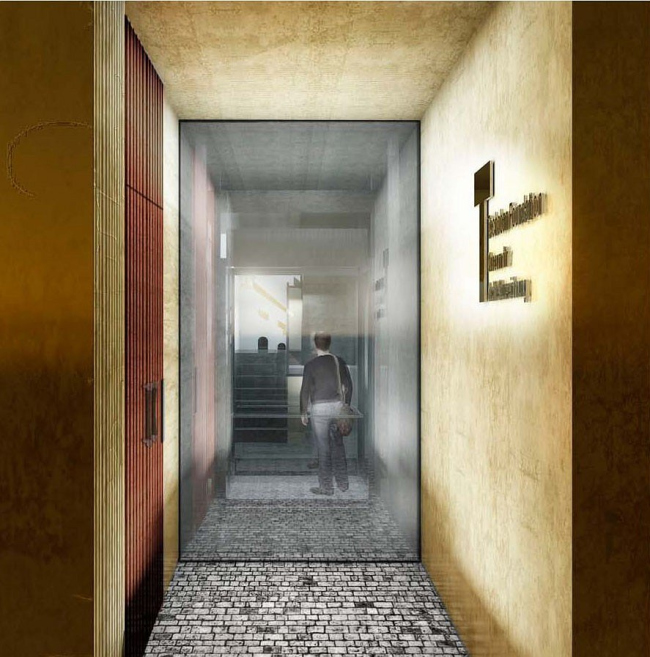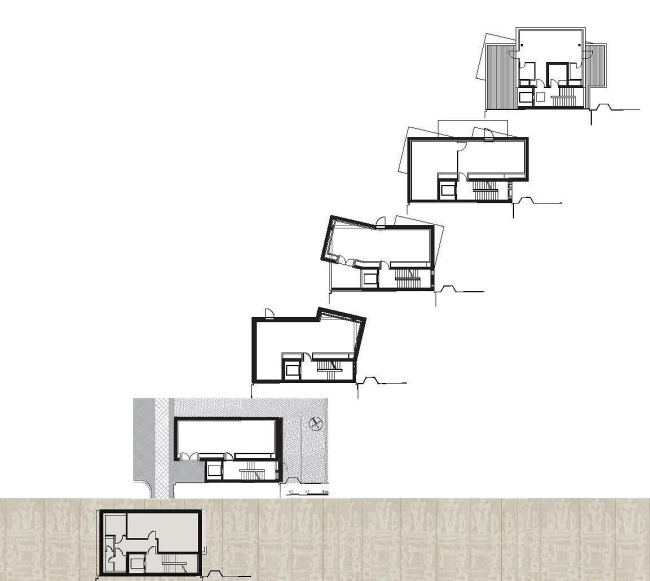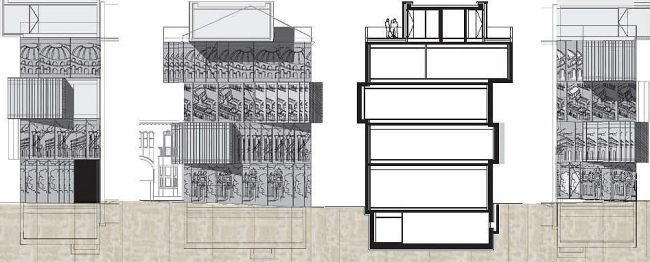|
Published on Archi.ru (https://archi.ru) |
|
| 12.03.2012 | |
|
Graphics Museum |
|
|
Anna Martovitskaya |
|
| Architect: | |
| Sergei Tchoban | |
| Sergey Kouznetsov | |
| Studio: | |
| Tchoban Voss Architekten | |
| SPEECH | |
|
This summer, a new Museum of Architectural Graphics is going to open in Berlin; the museum building was designed by Sergey Choban and Sergey Kuznetsov. The new museum will be built in Prenzlauer Berg. For years, this part of the city was predominantly an industrial one. However, after Berlin hopped on the ecological bandwagon, its numerous plants and factories were moved outside the city boundary, while the former industrial structures became homes to art galleries, recording studios, art and fashion shops, and flea markets. Among other things, on the territory of the former brewery “Pfefferberg”, where the Architecture Graphics Museum will be built, the galleries “Aedes” and “Ikeda”, as well as Olafur Eliasson office, are already functioning. The new museum will be erected on the spot of the former factory garage and will adjoin the firewall of the neighboring four-storey house. It was mostly this vicinity, this “back-to-back” location, as well as the modest size of the land site itself, that determined, for the better part, the volume/layout solution of the future building. Having no room to either “step back” or actively spill over to the sides, the museum building grows fully upward, right up to the ridge of the roof of the next house. And, to make sure that the new building does not look like a trivial annex to the already existing house, the architects compose it from five blocks that are placed in a somewhat staggered order. And these blocks are by no means parallelepipeds, either: one of them sports the corners that are perceivably “pulled to the sides”, while the layouts of the others look like a Cyrillic «Ã». Thanks to this diversity of shapes, the facades of the building form dynamic marquees that look unlike one another, while the building on the whole looks like a stack of crates. The top block, according to the architects’ plan, will be faced with mirror glass, which will visually conceal the height of the museum building and will hide its excessive elongation, while the facades of the four lower blocks will be finished with decoratively wrought concrete panels of light-sand color. Some of these panels while still being molded will be covered with vertical grooves, very much like “flutes” that have migrated over to the concrete surface from the pieces of architectural graphics. The museum facades will demonstrate a clearer indication of its function and contents, though: about half of the panels will bear the architectural images of buildings belonging to different epochs. Some parts of the “drawn” buildings – windows, cornices, and gables – will be glass-covered and thus turned into actual windows, so the daylight passing through them will fall on the inner walls of the entrance lobby and the exhibition halls in a “thematic” pattern. From the side of Christinenstraße, the surfaces of the massive concrete walls on the first and third floor levels will be interrupted by huge belts of stained glass that will accentuate the main facade and the entrance to the building. NoneNoneNone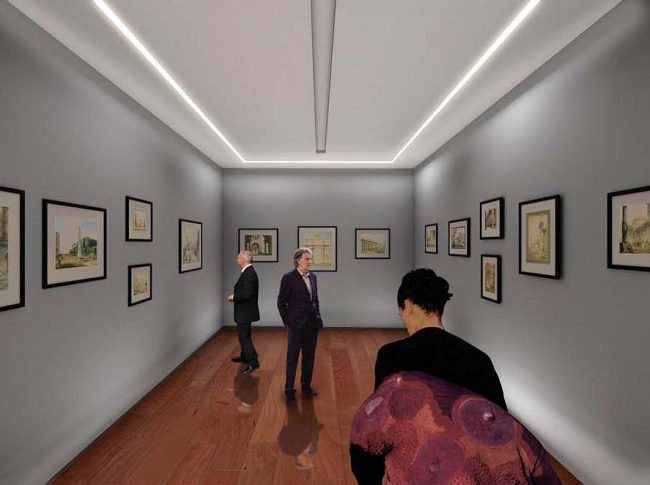 None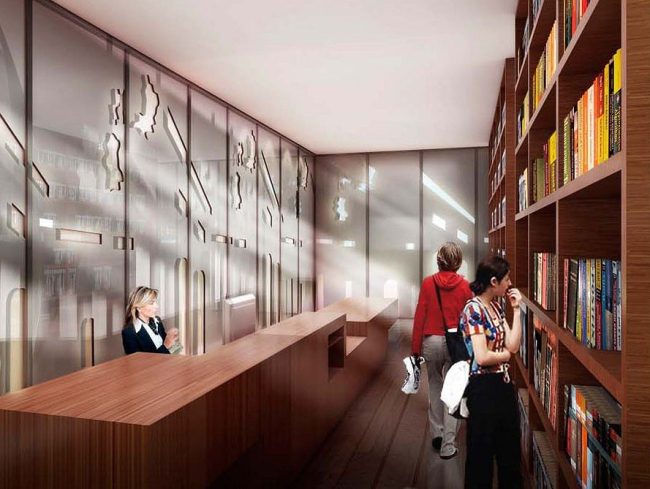 None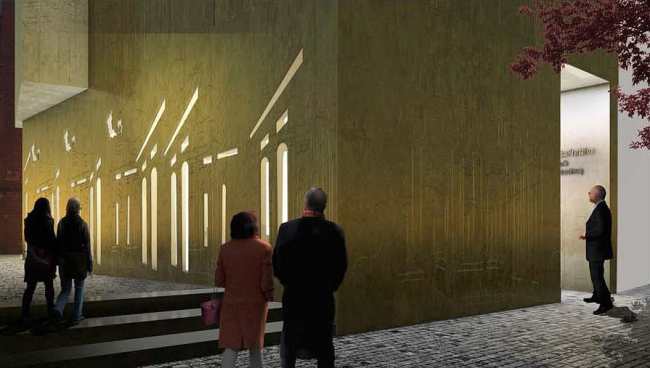 NoneNoneNoneNoneNone |
|

